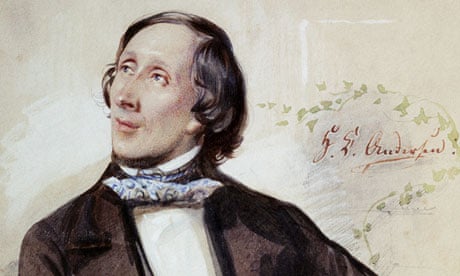Experts in Denmark believe they have found the first story written by Hans Christian Andersen.
The Tallow Candle was discovered by local historian Esben Brage in the dense private archives of the Plum family, revealed Danish paper Politiken, which printed the story in its entirety today. Brage was in the reading room at the National Archive for Funen in Odense when he stumbled across a small, yellowing piece of paper at the bottom of a box and realised it might be important. Two months later, experts have now confirmed that the story was written by Andersen.
"This is a sensational discovery. Partly because it must be seen as Andersen's first fairytale, and partly because it shows that he was interested in the fairytale as a young man, before his authorship began," Ejnar Stig Askgaard of the Odense City Museum told Politiken. "And I am in no doubt that it has been written by Andersen." Experts Bruno Svindborg of the Royal Library and Professor Johan de Myliu have also agreed the text was written by Andersen.
The story tells of a little candle, dirtied by life and misunderstood, which eventually finds happiness after a tinder box sees the good at its heart and lights it. "The Tallow Candle had found its right place in life – and shown that it was a real candle, and went on to shine for many a year, pleasing itself and the other creations around it," writes Andersen.
The story is not "at the level of the more mature and polished fairytales that we know from Andersen's later authorship", according to the experts, and has been dated to his time at school, probably between 1822 and 1826. Andersen made his literary debut in 1829. The first real fairytale he published was The Dead Man, with two booklets appearing in 1835 called Fairytales Told to the Children. He went on to write hundreds of stories, including The Little Mermaid, The Emperor's New Clothes and The Little Match Girl.
Author and fairy tale expert Sara Maitland, whose latest book Gossip from the Forest explores the connections between forests and fairy tales, said the newly discovered story was "very, very Andersen".
"It's highly moralistic, rather sentimental, and it's animating an inanimate object. That's very Andersen - I don't know anyone else who does it that way, like The Tin Soldier, The Red Shoes, and now The Tallow Candle," she said. "And I'm fascinated that nobody found it before. Why has it just been sitting in a box undiscovered? The world is full of Hans Christian Andersen experts - it's very odd."
Although Maitland, too, was unimpressed with the quality of the story, she found it "very interesting - he obviously got better at his job which is very refreshing". And she believes the story of an unlit candle would have had more resonance in the era in which Andersen was writing. "I'm sure it would have meant more at the time. For every child who woke in the night, someone would have lit a candle or they would have stayed in the dark," she said. "We don't look at the candle as a source of light any more ... It would have been a more meaningful story then - but I don't think it's very good."
The newly discovered tale is dedicated "To Madam Bunkeflod from her devoted HC Andersen". Bunkeflod was a vicar's widow whom Andersen knew as a child. The story was then copied, with that manuscript passed to the Plum family, among whose archives it was found by Brage, almost 200 years later. The Tallow Candle is the most important Andersen find since the 1920s, when his memoirs were discovered at the Royal Library, said Politiken.
The new Andersen story follows the discovery earlier this year of 500 new fairytales in an archive in Germany.

Comments (…)
Sign in or create your Guardian account to join the discussion